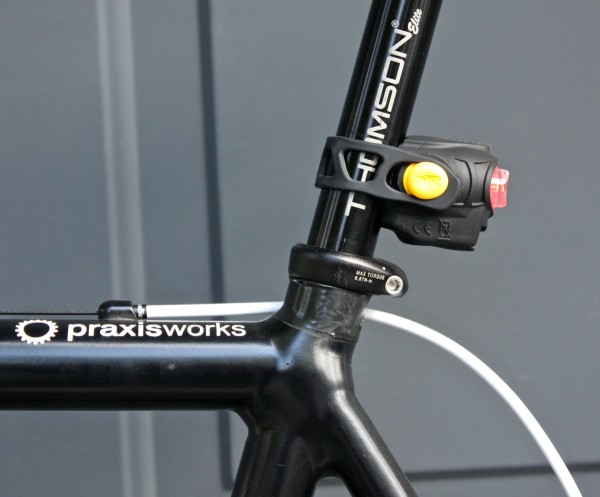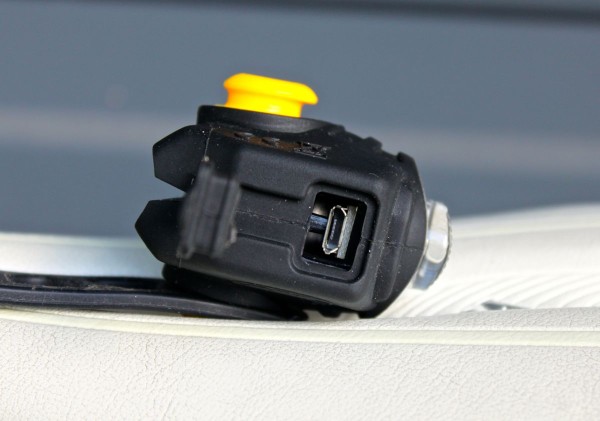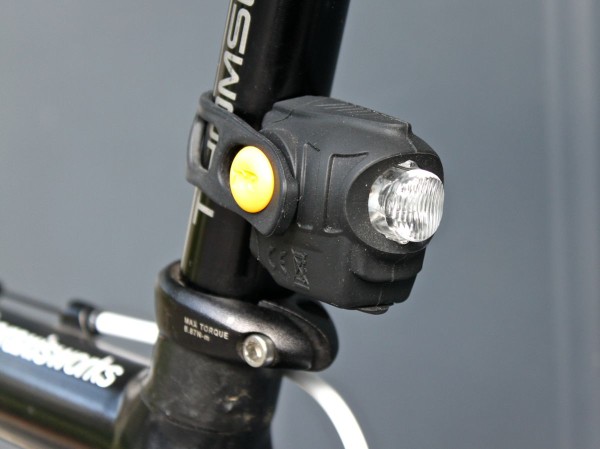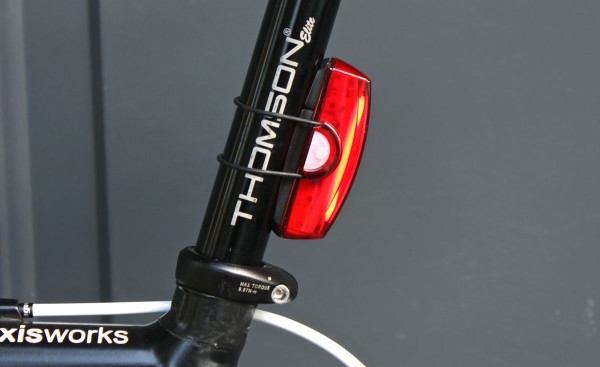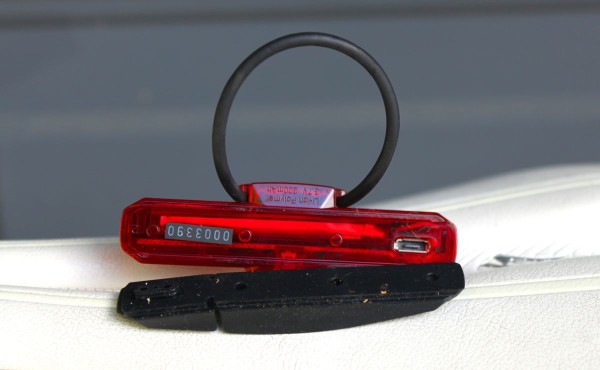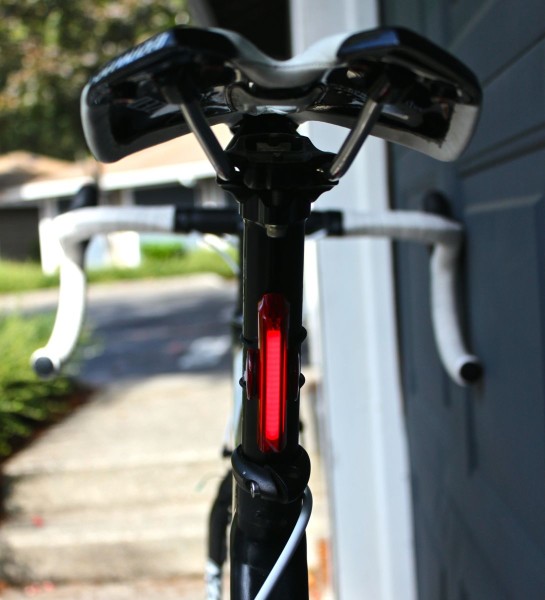With the kids back to school, cyclocross season starting, and summer ending, it’s time to bust out the commuter lights again. Personally, I prefer easy to mount lights that recharge via USB and have good battery life. The NiteRider Stinger USB and the Cateye Rapid X fit the bill.
Flash past the break for the reviews.
The original NiteRider Stinger taillight (sans USB) was in rotation for about a year and a half until the USB version came along. This new version works just the same, with the addition of the rechargeable battery (via a USB micro plug). It has a flashing mode, high steady, and low steady (group ride setting). Battery life is quoted at 4 hours on high steady, 16 hours for low steady, and 10.5 hours on flashing. Those numbers correspond with real world use pretty closely.
The light lets you know when the battery level is low by flashing blue when turning it off. Charge time from dead takes about 1 hour 45 minutes.
The max output of the rear light is 25 lumens. This is more than enough to be seen with in the urban environment. The tool-less mount (rubber strap) is dead simple to use, and fits just about any seat post (including those aero jobbies) just fine.
In use, the light works great. Side visibility is better than some thanks to the protruding lens. My only issue with this one is when it’s not in use. The rubber strap makes it easy to take on and off the bike when locking it up. However, the light is activated by pushing in the clear lens. As you can imagine, tossing this in your bag or pocket often times causes the light to activate, prematurely running down the battery. This makes the light hard to live with, but at least the $35 cost is budget friendly.
The Cateye Rapid X taillight is of similar concept. It’s a fairly new addition to the ever expanding light selection I seem to have. It’s quickly moved to the top of the pile thanks to it’s unique flash patterns, brightness, ease of mounting, and great 180 degree visibility.
The Rapid X has 6 modes. Four flash patterns to suit your personal preference, and a high steady and low steady (group ride setting).
Battery life is as follows:
High Steady:1 hr
Low Steady:5 hrs
Flashing:30 hrs
Rapid Flashing:16 hrs
Pulse Flashing:16 hrs
Vibration Flashing:8 hrs
I typically only use the light on high steady, or the pulse flashing pattern, and find with daily commuting it needs recharged on the weekends. Not to shabby, and way easier than / less spendy than changing out batteries. When the battery level gets to low, the light automatically switches to a flashing setting to get you an extra hour before its completely dead.
From drained, it will take two hours to charge via a micro USB cable. And unlike the proprietary rubber strap the NiteRider uses, the Rapid X uses a rubber o-ring in one of two sizes to fit most any seat post or seatstay.
The Rapid X makes use of a COB LED strip rather that the more traditional single LED and lens combo. This, combined with a red tinted transparent housing allows for 180 degree visibility.
To turn the light on or off, one has to press and hold the power button for 2 seconds. This (for the most part) elevates the issue of the light accidently being activated while stowed. In use, the light is plenty bright enough on any setting to be seen with. Retail cost for the Rapid X is $40.
Both the NiteRider Stinger USB and the Cateye Rapid X are great lights that are easy to take on and off the bike. Battery life is plenty good, and brightness is more than adequate on both. The Rapid X’s power button delay gives it the win here however, as nothing is worse than pulling a dead light out of your bag when it’s time to head home for the night.
